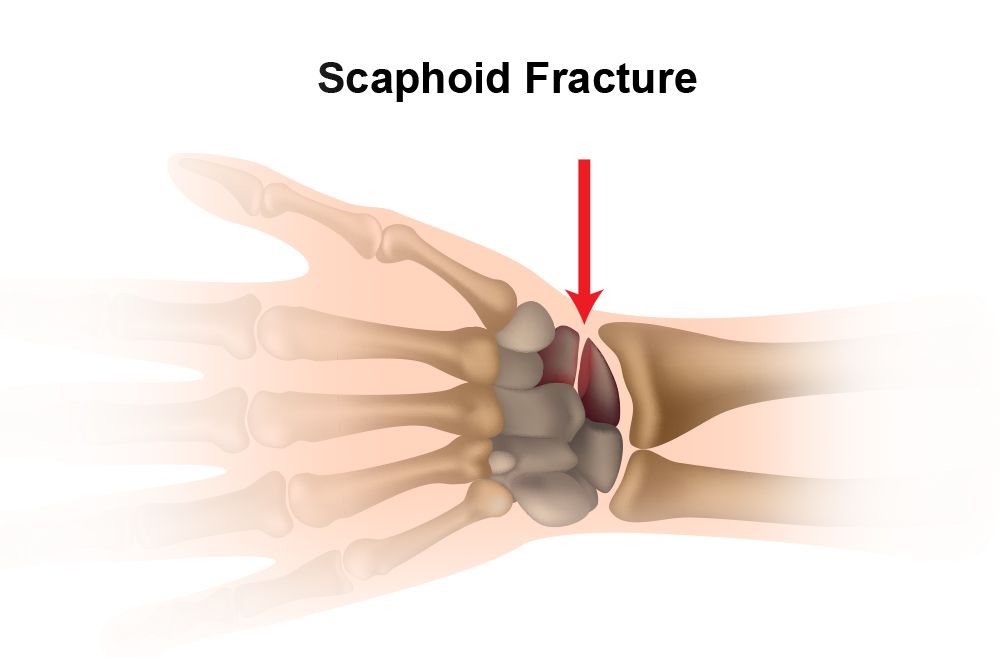Improve Function and Alleviate Pain with Scaphoid Fracture Treatments
A scaphoid fracture is a common type of wrist fracture and is often associated with unpredictable healing. Dr. Gregg A. Vagner can provide a splint or cast, recommend exercises, or perform surgery to set the break at our Austin, TX, practice. Serving our community since 2005, Dr. Vagner is dedicated to providing his patients with compassionate care and skillful knowledge. He can evaluate your injury and determine the right treatment depending on your needs.
What is a Scaphoid Fracture?
Also referred to as a navicular fracture, a scaphoid fracture occurs in one of the eight small carpal bones located in the wrist. The scaphoid bone is near the base of the thumb, and a fracture can result in pain and tenderness in that area. Small movements, such as grasping or pinching, can further irritate the wrist, resulting in more severe symptoms. The most common cause of a scaphoid fracture is trauma from falling onto an outstretched hand. Such an impact puts immense stress on the scaphoid bone, as it crosses two rows of carpal bones, forming a hinge. Blood supply is lacking in some portions of the scaphoid bone. If it becomes fractured, it can decrease blood flow even more, resulting in complications with healing.

Types of Scaphoid Fractures
The anatomy of the scaphoid is divided into three categories. The proximal portion of the scaphoid is closest to the point of attachment, and the distal portion is situated furthest away. The central section of the scaphoid is referred to as the “waist,” which is where the majority of fractures occur. There are two types of scaphoid fractures, which are categorized according to the severity of the break:
- Non-Displaced Fracture: Bone fragments line up correctly when a non-displaced fracture is present.
- Displaced Fracture: This type of fracture occurs when the bone fragments have moved from their proper positions. Gaps or overlapping may be present between the pieces of bone.
Non-Surgical Treatments for a Scaphoid Fracture
For minor or less severe scaphoid fractures, non-surgical procedures can be sufficient. Common treatments include:
- Cast: Typically, a minor scaphoid fracture can be repaired with a cast, which must be worn for approximately 9 to twelve weeks.
- Electrical Stimulator: In cases of nonunion, or when healing is delayed, an electrical stimulator may be used to deliver low-intensity electromagnetic waves to stimulate healing.
The scaphoid bone is near the base of the thumb, and a fracture can result in pain and tenderness in that area.
Surgical Treatments for a Scaphoid Fracture
In the case of more severe scaphoid fractures, surgery may be required to effectively repair the wrist. By surgically realigning the bones and stabilizing the fracture, the chance of successful healing is significantly increased. Common surgical treatments include:
- Screw Fixation: In order to stabilize the bones in their proper positions, screws and wires can be used until the healing is complete. An incision will be made in order to access the bone. The size and location of the incision will depend on the extent of the fracture.
- Scaphoid Debridement: To clean out problematic tissue and smooth out any jagged edges, debridement can be performed.
- Bone Graft: Typically used in conjunction with other methods, a bone graft can be placed around the fracture to encourage bone regeneration and healing.
Schedule a Consultation Today
If you are experiencing symptoms of a scaphoid fracture, or if you suffer from hand, wrist, or arm pain, schedule an appointment with Dr. Vagner to find out what treatment will work for you. Call our office at (512) 454-4561 or contact us online to schedule your consultation.
